Guide to 6 Meter DXing — Magic Band Key Points
Here are the AI-generated key points for this article: DXing on 6 meters, the Magic Band.
- The Magic of 6 Meters and Propagation Modes: 6 meters within 50-54 MHz offers various propagation modes like Sporadic E, F2 layer, meteor scatter, and moon-bounce, enabling exceptional QSOs even with basic equipment. It’s the Magic Band.
- Personal Experiences Illustrate the Band’s Magic: The author shares memorable contacts on six meters across different modes and distances, highlighting the band’s unique and exciting propagation opportunities.
- Equipment Choices for 6 Meters: A variety of rigs, transverters, preamps, power amplifiers, and SDRs, from vintage rigs to modern SDR setups, are available to suit different operating styles.
- A Range of Antennas for 6 Meters: Options include dipoles, verticals, stressed Moxons, Yagis, Omniangles, and more, each offering different advantages for portable, temporary, or permanent setups.
- Additional Tips and Resources for Exploring 6 Meters: Further reading, practical tips, and experience stories emphasize the importance of experimenting with antennas, equipment, and understanding propagation to ‘capture the magic’ of six meters.
Guide to Six Meter DXing — Magic Band Introduction
Have you ever wondered about the “Magic” of Six Meters? After all, you’ve probably pressed the six meter button on your rig and failed to find any magic or even any other stations. If that’s the case, you’ve identified the “tragic” of the band. But without tragic there would be no magic.
Here’s how I sum it all up:
average equipment + limited antennas = exceptional QSOs.
It really doesn’t take much on six meters — your existing HF+6 meter rig along with a simple antenna, even a dipole, will work. Read on and you’ll find out how I know that dipoles work along with how to build one of your own.
I will also provide plenty of insight into how you, too, can “Capture the Magic of Six Meters.” This post covers propagation, equipment, software, antennas, awards and contesting, as well as assistance in finding the magic.
All of this is leavened with stories from my personal experience. Here’s a table of contents. Click on the links to move your specific area of interest.
If you’re interested in this information in book form, you can find a free eBook download at Magic Band Revealed.
Table of Contents
Table of Contents
WHAT IS THE MAGIC BAND?
Six meters runs from 50 to 54 MHz within the USA. As such it sits midway between the HF bands, ending with 30 MHz, and the higher VHF bands, starting with 144 MHz. In that position, it provides virtually all forms of propagation familiar to HF and VHF operators along with a few that are much more prevalent on six meters. For modes of operation, there’s not only CW, SSB, and WSJT-X, but also FM simplex as well as FM repeaters.
The go-to propagation mode is Sporadic E (Es), which is reflection from the E layer of the ionosphere. This crops up mostly in the summer but there are also a few times during the rest of the year when Es can form. Sometimes it’s there, sometimes it’s not. Therein lies the magic.
Normal distances on Es can range from a single hop’s 1,500 miles to double and triple hop. More detail on this in the propagation chapter.
As with HF there is also propagation via the F2 layer of the ionosphere. This is usually limited to the peak of the sunspot cycle. Now that’s some real magic with nearly world-wide propagation.
Next we get into the more esoteric modes of propagation, but many that are used every day. This includes meteor scatter where the meteors entering the Earth’s atmosphere light up the E layer and provide a path for six meter signals, as well as higher VHF signals. I’ll also mention ionoscatter, where signals are reflected from disturbances in the ionosphere.
Then there is Trans-Equatorial Propagation, TEP, where the signal essentially jumps the Earth’s magnetic equator. Stations in Argentina become armchair copy here in Texas when that happens.
There is also tropospheric enhancement when the weather provides a thermal inversion in the troposphere and basically bends the RF signal near the earth’s surface. While this happens on six meters, it’s more likely on the higher VHF bands.
Then there is moon-bounce or EME for Earth-Moon-Earth. Here signals are literally bounced off the surface of the Moon. That typically takes some power and high gain antennas.
That is a quick overview, much more is provided later in the propagation chapter. But before we move on let’s look at a few of my personal magic experiences on six meters.
My first meteor scatter contact on six meters was with Dale, WA4CQG, over a distance of 672 miles using WJST FSK441 mode. That mode has now been updated to MSK144 where I was able to work Wyatt, AC0RA, from grid EL58 on essentially a sandbar at the mouth of the Mississippi River. That’s also one of the highlights of the magic band, working rovers who set up in the places that few others even travel let alone get on the air.
My first TEP contact was with Sebastian, LU4FPZ, a distance of 5,000 miles. I was running 100 watts CW into a dipole in my attic.
My first Europe contact was with Clive, GM3POI, in the Orkney Islands using 100 watts FT8 into a vertical.
All of these were very exciting contacts during fabulous openings. But my top six meter QSO was with Bob, ZL1RS, during an unexpected brief opening in December from Texas to New Zealand via what experts reckon was Es plus TEP. I was running 100 watts CW into a stressed Moxon at about 20 feet.
As you can tell, six meters offers a great deal. That includes white noise during the tragic times, but also some exceptional QSOs during the magic times.
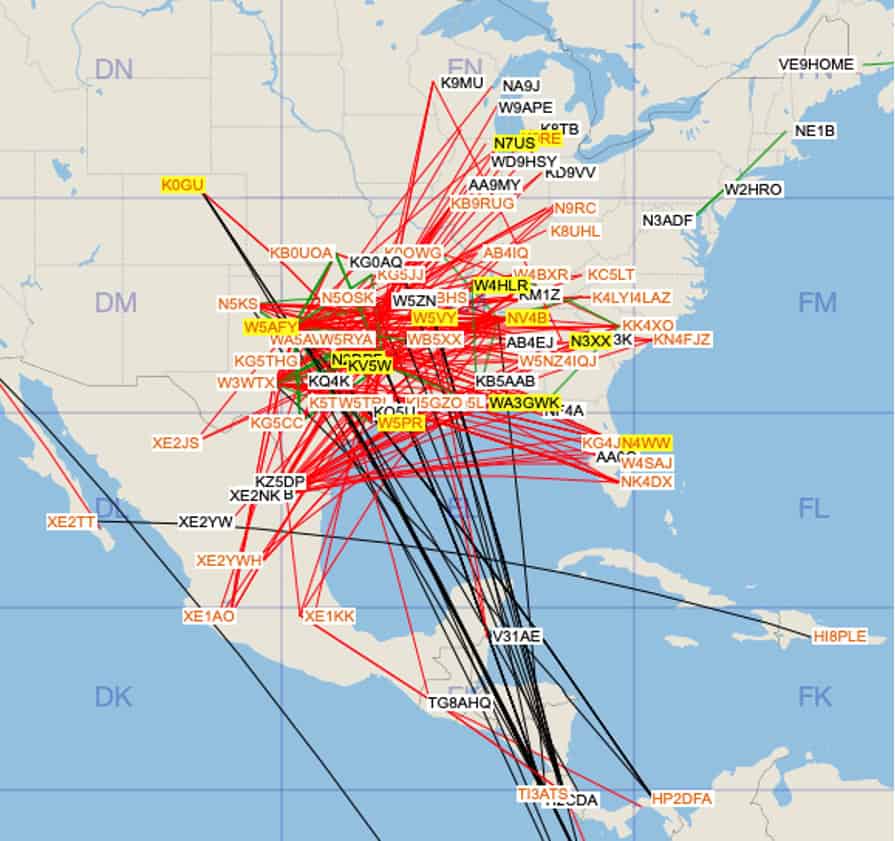
Image from DXmaps.com during six meter opening.
For further reading:
- An article on the Icom America Blog — The Magic Band.
- Article in CQ Magazine February 2021 Issue — Six Meters: The Magic and Tragic Band.
- Magic Band Revealed Book by K5ND — Free eBook Download and Amazon paperback.
PROPAGATION
As noted above, this is where the magic happens on six meters — all the various options for make exceptional QSOs.
Sporadic E
I claim that this propagation mode is called magic because no one really knows why it happens. There are several theories. Whatever the cause the challenge is predicting when Es will happen. Next is determining how best to take advantage when Es does happen.
The theory that I like is documented in a doctoral dissertation by Christina Arras dated 2010 titled A Global Survey of Sporadic E Layers based on GPS Radio Occultations. Her research focuses on measuring Sporadic E and its effect on GPS satellite signals. You can find it on Carl Luetzelschwab’s, K9LA, website at http://www.k9la.us/PhD_Thesis_on_Sporadic_E_by_Christina_Arras.pdf
I’ve borrowed her illustration, below, that shows wind shear compressing metallic ions from micro-meteors into ionized clouds in the E layer.
Seasonal variations are thought to be due to changing meteor dust trails that the Earth encounters in the Northern Hemisphere in June, July, and August and in the Southern Hemisphere in February and March.
The illustration below is also from her dissertation. It shows the occurrence rate of Sporadic E by season in 2008, plotted from her GPS satellite data.
From this it looks like the rate of Es openings in North America for 2008 was fairly low compared to much of the rest of the Northern Hemisphere. Just think about the magic band in those areas!
Of course, her data is via L-band GPS satellites rather than 50 MHz signals from Earth, but it should give us a better understanding of this phenomenon. Not only that, but the information above does correlate with our own experiences with Es openings.
Here’s my own crude illustration of a sporadic E cloud. DX Maps does a great job of showing where the cloud is with the propagation on all sides out to about 1,500 miles for single hop.
The key, of course, is determining when the cloud appears and getting everyone on the air who are in the right places to make QSOs. Six meter beacons can help with that effort. But it seems to me that many, many more people are on the air using FT8’s weak signal capabilities. As a result, I feel we’re finding many more openings than in the past.
One thing that I see on the air is the movement of the Sporadic E cloud. It can start near the east coast and gradually move across the USA. It can also move a bit north and, as a result, leave ol’ Texas behind. It’s pretty interesting to observe these things over time.
Note that Sporadic E can extend to the 2 meter band at times of exceptional ionization.
In the first chart below I’ve gathered all my own six meter QSOs and plotted them by month and year. This has been my experience on six meters over the years with most activity in May, June, and July. It was interesting to see April pick up in 2020. Perhaps that’s an FT8 phenomenon. Please note that there is a great deal of variation in my numbers. For example, in July 2017 I was at the National Scout Jamboree and July 2019 at the World Scout Jamboree. Plus, all VHF contests since 2018 have been as a rover — so those QSOs are not shown.
This next chart is the same data but plotted cumulative. This should perhaps more clearly demonstrate when six meters is working and when it is not working. Hope that helps you find the right season to make some QSOs. Of course, your mileage will vary.
Meteor Scatter
This mode is extraordinary. Just thinking about bouncing your signal off the trails of meteors as they enter the Earth’s ionosphere is pretty awesome. But that’s what happens. And, it happens all the time.
Here’s my rough drawing of this phenomenon. The meteorites hit the D and E layers of the ionosphere lighting up micro sized patches. Since meteorites are entering the atmosphere all the time, this is going on all the time with an estimated 100 billion entering every day.
However, it’s more intense at dawn local time since the Earth’s rotation coupled with the orbital speed of the Earth generate the highest level of meteorite capture. It’s also maximized during seasonal meteor showers, which can be predicted.
The term “scatter” implies that the transmitted signal hits these ionized micro patches and is dispersed forward. I’ve tried to show some of that in the drawing. This, in turn, means that the receiver will pick up small bursts of the transmitted signal. The ham radio term is “ping” since that’s a bit like the sound they make in the receiver.
In the early days of ham radio meteor scatter they often used CW and eventually went to very high speed CW with the received signal recorded and then slowed down to try to catch glimpses of the call sign, etc.
Since the advent of WSJT and now WSJT-X computer signal processing is used to accomplish the same thing. The early mode of FSK441 and the newer mode of MSK144 essentially send hundreds of messages packed into a several second transmission (15 seconds is currently the standard duration).
The WSJT-X modes establish standardized messages along with precisely coordinated transmission and reception timing. They also use quite a bit of data communication error correction, etc.
Most consider the frequency range for meteor scatter to be between 40 and 150 MHz, but hams have accomplished QSOs on higher bands from 222 MHz to 432 MHz.
Note that this mode is also used in dedicated communication systems to overcome cost and capacity issues of satellite communication and the operational difficulties of HF communication. Examples include COMET (Communication by Meteor Trails) used by NATO in the 1960s and SNOTEL (Snow Pack Telemetry System) used by the Department of Agriculture with 500 remote stations to collect information on snowpack and precipitation in the Western USA. This system started in the late 1970s and extended at least into the 1990s.
I’ve also pulled together a somewhat detailed slide deck and video on how to get started on meteor scatter with WSJT-X MSK144. You can find it at Harnessing Meteors for VHF QSOs.
Ionoscatter
A related mode of propagation is ionoscatter. The WSJT-X software suite has a mode called ISCAT that uses similar techniques to MSK144 to essentially bounce signals off tiny patches of ionization in the E layer. Given this approach, it works very similar to meteor scatter. It’s not used much but probably should be tried more often on six meters. It’s also quite possible that some meteor scatter contacts are actually taking advantage of ionoscatter.
A relatively new WSJT-X mode is Q65. The standard frequency is 50.275 MHz and the generally accepted mode settings are 30 seconds Mode A. You can find more about Q65 including detailed operating instructions at WSJT-X and the Q65 Mode for 6 Meters and Up.
Trans-Equatorial Propagation (TEP)
TEP involves the F-region of the ionosphere, where it forms on both sides of the geomagnetic equator. You can get a hint of this in my rough drawing below.
The propagation runs North-South through reflections from one patch directly to the next patch and then back to the Earth. Those patches are equidistant from the geomagnetic equator and thus facilitate propagation between locations that are also equidistant. However, Sporadic E can further enter into the mix with one or more hops that then reach the TEP region.
You can get an idea of how the geomagnetic equator differs from the physical equator from the map below with its distinctive dip in South America. The center line is the geomagnetic equator.
Given all this, it’s typical for Caribbean and Central American stations to work TEP into the southern part of South America. In fact, it’s thought that the discovery of TEP on six meters happened when XE1KE worked LU6DO and other stations in Argentina in 1947.
TEP typically happens in the late afternoon and early evening. Seasonally the equinoxes are best for this activity.
I’ll commend you to Carl Luetzelschwab, K9LA, website and his 2011 paper on Trans-Equatorial Propagation at http://www.k9la.us/Trans-Equatorial_Propagation.pdf
I have personally experienced TEP in September 2014, February and April 2015, October 2017, and April 2020. In the most recent opening I worked FT8 QSOs with several stations in Argentina. It was interesting, as is often the case on six meters, that most of the stations were near Buenos Aires — with almost a pipeline into the Dallas area.
I started that day with a Sporadic E opening working V31MA followed by TG9AJR. Next the TEP opening started with LW2DAF first into the log with a +03 signal. That was followed by LU9DO, LU7FIN, LU9FVS, and LU8ADX. A little while later I found CE2SV. He’s located along the same latitude as the LU contacts. I did hear a CX station but wasn’t able to make the QSO.

www.DXmaps.com snapshot of my first QSO that day.
My longest distance six meter QSO to ZL1RS is also thought to have happened as a result of TEP coupled with Sporadic E on both sides of the contact.
F2 Propagation
This is the type of propagation we get excited about on the HF bands and use most days. For six meters it doesn’t really happen until the sunspots are in abundance. Although, as noted in the TEP description above, it does happen outside the peak of a solar cycle but it is isolated to areas around the geomagnetic equator.
I’ve never really experienced F2 on six meters, that I know of, because the solar cycle hasn’t helped in that regard when I’ve been operating on the magic band. However, the stories are quite spectacular of working stations around the world on six meters during the peak of a strong solar cycle.
Aurora
I don’t have any personal experience with aurora propagation as my location in Texas is just a bit too far away. It relies on the aurora borealis, also called the northern lights, which is caused by solar activity chiefly due to solar flares.
There are two types of propagation back scatter and forward scatter, also referred to as Auroral E. The backscatter requires pointing your directional antenna at, or slightly at an angle, to the auroral curtain causing scatter signals on an angle due to the reflected bounce.
Since the aurora is actually moving and rippling, the signal also flutters in and out, causing a distinctive raspy sound. CW is thought to best overcome this effect. I’ve not heard what might happen to an FT8 signal. Perhaps MSK144, a meteor scatter mode, or ISCAT, an ionoscatter mode, might work best.
I have read that forward scatter or Auroral E provides a much clearer signal and for longer distances.
While this type of propagation can also appear on higher VHF bands, this is a great example of the magic of six meters.
Propagation Calendar
I came across a nifty VHF-UHF propagation calendar recently and have generated something similar to provide a simple overview of the six meter propagation as it happens through the year.
Of course, meteor scatter communication can happen at any time. This calendar points out the showers for enhanced propagation.
Further Reading on Propagation
YouTube Video from RSGB 2020 Convention on Radio and Weather by G3YLA
Meteor Scatter — A Burst of Excitement
Transequatorial Propagation — Wow!
Meteor Scatter Propagation: How it Works & Getting on the Air
EQUIPMENT
There are some dedicated rigs for six meters including many older vintage rigs including the Drake TR-6, the Heathkit SB-110A, Yaesu FT 690, Icom IC-575, and many, many others. There are even a few current FM only six meter rigs. And don’t forget the MFJ-9406 for six meter only SSB with 10 watts PEP output.
Many of us though have a relatively recent model multiband HF rig that includes six meters. If you’re lucky enough to have any of these rigs in your shack, you’re all set.
Six Meter Rigs
I’ve used the Elecraft K3 and the Icom IC-9100 as well as the Icom IC-7300. I started with the Elecraft K3 primarily as a HF contest and DXing rig. It allowed me to add to it over time, moving from a QRP rig to a 100 watt rig, then sub-receiver as well as a six meter preamp. That’s the rig where I first pressed the six meter button with my existing 20 to 6 meter vertical.
That was followed by the Icom IC-9100 where I could also get on other VHF bands, 144 and 432 MHz. I’ve also tried the IC-7300, which works great on six meters.
The point with this is that we’re all on a journey. First, finding something we enjoy and then building a better station as we go from rigs to antennas and more.
Transverters
If you have one of the older HF rigs without six meters, you can try a transverter. This device takes your 28 MHz output and converts it to 50 MHz. And it does the same thing in reverse with the received signal.
Transverters can be found on eBay in the $50 to $100 range or you can purchase a very high grade six meter transverter from Q5 Signal and others. The low cost versions are a great way to get on the air and begin exploring all that six meters has to offer.
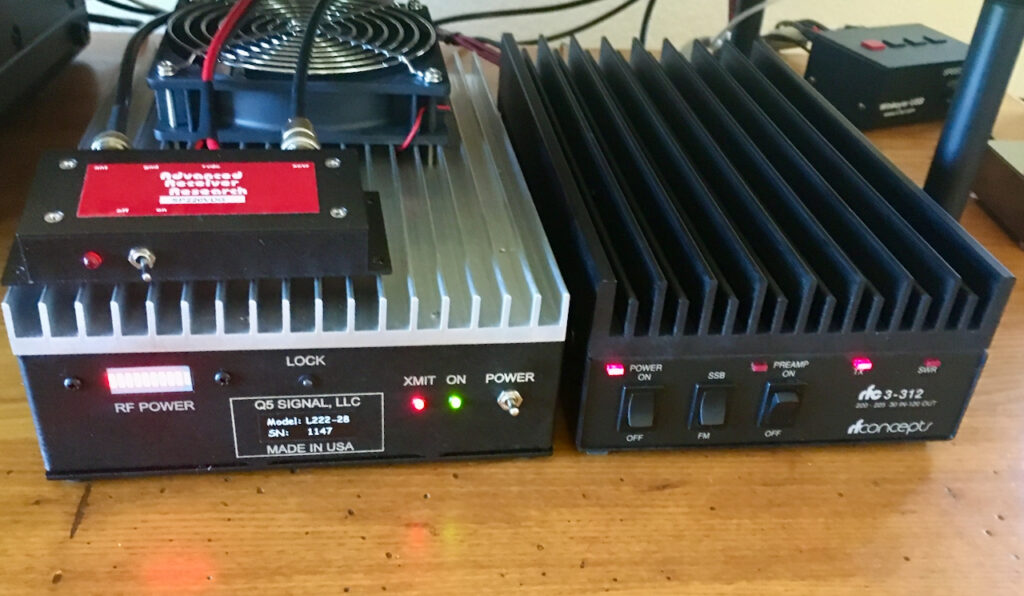
Preamps
Preamps are a good idea on six meters. Many rigs have internal preamps. For example, the IC-9100 has settings for two preamps on the HF+6 meter frequencies. According to Icom, preamp setting #1 is best for 1.8 to 21 MHz, while preamp setting #2 is best for 24 to 50 MHz. This is a good example of what many transceivers have built-in and why you should check the operating instructions for your rig.
There are also several options for external preamps. Current manufacturers included Advanced Receiver Research (ARR), Mini-Kits, and Elecraft. I’m sure there are others. In addition, TE Systems power amplifiers have built in preamps.
The next challenge with preamps is to power them and switch them out of the line when you’re transmitting. With higher frequency VHF-UHF preamplifiers it’s best to mount them close to the antenna so they catch the signal at its best and power it down the coax to the receiver. With six meters, that would be nice but not nearly as necessary as it is with much high frequency signals.
Usually the preamp will have relays built-in along with ways of powering them. Switching can happen either through RF sensing circuits or separate lines. A sequencing circuit is usually needed to make sure the preamp is out of the line before the transmitted RF arrives.
As you can see, this is a nice place to look for additional performance improvement but as you start out, your rig’s internal preamp or no preamp at all is just fine.
Power Amplifiers
There are lots of options for boosting your transmit power. One word of caution before we examine those options is that working on your antenna and receiving capabilities should be your first priority. It does no good to transmit a loud signal and not be able to hear the other station. Even so, power amplifiers are pretty cool additions to your ham shack!
Solid-state amplifiers are an excellent starting point. I’m using a TE Systems 0510G that provides 170 watts output for 10 watts input. It also has a built in preamp. There are higher power versions, which are tempting. But I chose this one to fit my VHF Limited Rover operations. This contest category has a maximum 200 watts on six meters. Lower RF power also simplifies the DC power requirements.
In summer 2021 I added a TE Systems 0552G amp that puts out 375 watts. I wanted this for a rare 6 meter grid activation in the Texas Panhandle. It worked well and got the job done. But there is now overdrive protection on any of the TE amplifiers. I know this all too well.
Other dedicated six meter solid state amplifiers are hard to find other than in the used market. There’s an M2 6M-1K2 kilowatt amplifier and a few others you can find. W6PQL has some parts kits available.
On the tube side it’s the same story trying to find a dedicated six meter amplifier. There is the Alpha 8406, Commander VHF-1200, and I’m sure a few others. Another option is to work with King Conversions to convert an HF amplifier to a six meter amplifier. This typically involves starting with a Heathkit SB220 HF linear amplifier.
Yet another option is to convert Harris or Larcan amplifiers for operation on six meters. These are amplifiers that have been removed from service as television transmitters. Some are broadband enough that they need no tweaking to operate at 50 MHz. They do need power supplies, relays, sequencer, and fans. This is a very cost effective option.
Just as with your HF+6 transceiver there are a number of HF+6 linear amplifiers. Elecraft, Icom, Yaesu, Acom, Ameritron, and others offer these amplifiers. The advantage here is that they will help your HF operations as well.
SDR Panadapters
Yet another thing to consider for your six meter operation, or any operation for that matter, is adding a software defined receiver (SDR) for use as a panadapter. Although if you have an Elecraft K3/P3 combo, IC-7300, FT-991A, or something similar, you already have a panadapter built-in.
For my operation, I’m using a Nooelec SMArt USB RTL-SDR covering 25 to 1750 MHz along with a transmit-receive switch that connects the SDR to the antenna on receive and the IC-9100 on transmit. This SDR cost $30.
For software I use SDR Console, which is power packed and free. You can see the typical display I use for six meters below. There are three windows at the top. The first is set at 50.130 MHz and is picking up an SSB signal. That is also shown on the lower window, where I can monitor the SSB portion of the band.
The middle window is monitoring 50.313 for FT8 signals, while the third window is tuned to 50.323, which is the Europe to USA frequency.
This gives me great visibility of the key watering holes for six meters so that I can quickly spot changing propagation conditions.
Further Reading on Equipment
YouTube video from RSGB 2020 Convention on VHF/UHF Radios for Contesting and DXing by G8DOH
YouTube Video Software Defined Radios Part 1 by N2EME
YouTube Video Software Defined Radios Part 2 by N2EME
YouTube Setting Up Multiple SDR Windows by N2EME
TE Systems 6 Meter Amplifier — Testing and Setup
ANTENNAS
Six meter antennas are always fascinating, with lots and lots of options from homebrew to buy it off the shelf. Plus, the antennas are small enough to fit in your backyard or even your attic. I’ve tried a few. Here’s the run down on my experience.
Six Meter Dipole
What’s not to like about a six meter dipole? It’s simple and easily built. Roughly 9 feet from tip to tip, it can fit most anywhere. It is horizontally polarized, which purportedly is best for VHF DX. And, it works.
My write up on my own efforts with a six meter dipole has been the post with the most traffic on my website since it was published in 2014. So it must be a popular option as well. I’ll also note that I’ve worked Argentina and Uruguay using that dipole and 100 watts.
I used a 1:1 balun designed as a center insulator and covering 1.5 to 54 MHz. My initial calculations were for each side of the dipole to be 4 feet 6 inches. Once installed, that didn’t quite reach resonance. Merely bending the eye-rings attached to the balun, lengthening the dipole slightly, brought it into resonance with 1.1 VSWR at 50.150 through 50.500 MHz. From this you can tell that things are very sensitive at these frequencies.
I also suggest you take a look at a few of the online dipole calculators. Here are two links:
http://www.csgnetwork.com/antennaedcalc.html
http://www.hamuniverse.com/dipivcal.html
I see that these calculators call for slightly longer dipole legs than what I used. I do like the second calculator’s estimates for an inverted vee. Note that using wire with insulation changes the length needed. So plan to do a bit of tweaking.
Six Meter Vertical
Here my experience has been surprising given the prevailing wisdom that you must be horizontally polarized for VHF DX. I would imagine that is true above six meters. But my own experience on six meters has been eye-opening.

In 2011 I purchased a Cushcraft MA6V vertical that covers 20 to 6 meters. This added to my HF contest capabilities. I avoided using this antenna on six since at first I had the dipole and later a Moxon followed by a 3-element Yagi.
But, over the past few years the only antenna I had was the vertical. So I started working stations on FT8 and to my surprise they answered. That included Scotland, my first European six meter contact. I will note that the MA6V is an offset center fed vertical dipole, no radials needed. And mine is mounted at roughly 20 feet above ground.
So, a vertical is definitely worth trying on six meters. Plus, it’s easier to fit into the yard.
Six Meter Stressed Moxon
Moxon’s are my favorite type of antenna. My first experience was with a homemade hand steered 15 meter version that snagged lots of QSOs for my single-band CW and RTTY contest entries.
The advantages of these antennas are: directional, good front-to-back, and smaller than a Yagi. With the tips of the driven element and reflector bent to nearly touch, it squeezes the width of the antenna into a much smaller space.
The Par Electronics Stressed Moxon brings this compact design to six meters. It works great with good gain, sound front-to-back rejection, and incredible construction. I’ve used it for years at home on a push-up mast and more recently on my rover operations. It can hit a tree and be bent back into shape for the next grid stop — don’t ask me how I know.
While the gain isn’t as great as the multi-element Yagis, I like that its broader beamwidth covers a lot of ground without needing to tweak the rotator. That works great for contests when the band is open.
This is easily my favorite six meter antenna.
Six Meter Yagis — 3 Elements
Next up in my six meter antenna journey was trying to find a bit more gain while still fitting the antenna into my small side yard. I did a fair bit of review of the available options and selected the InnovAntennas 3-element LFA.
It works nicely and offers reduced noise, although I wasn’t able to discern much difference from the Moxon. But noise isn’t too much of a problem for my station.
I used that antenna for quite some time. The construction is rock solid but sitting up there on top of a push-up mast along with the rotator made me pretty nervous in the high winds that sweep through from time to time. So, after a while trying to discern a big difference with the Moxon and failing, I put the Moxon back on the push-up mast.
Recently, I’ve purchased an M2 6M-3SS Yagi. My motivation here was to find a higher gain antenna than the Moxon for use on a temporary installation with push-up mast in my backyard.
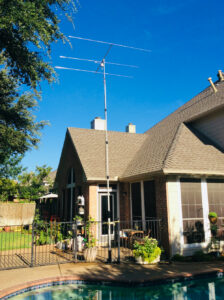
I use this for the Summer Es season. Plus, I use it during rover operations in the Texas Panhandle and Oklahoma when trying to activate a few rare grids.
Given that temporary use, I wanted a Yagi that could be easily taken apart and put back together again for transport and storage. I also wanted a lightweight antenna for use on the push-up mast.
This one fits the bill nicely and I’ve already worked a number of new DXCC countries in Europe and South America from my backyard installation. The LFA would not have worked in this application as it is heavy and a fairly complex build. It’s better for a permanent installation.
I’ve also added a Directive Systems 5-element Yagi that gets deployed for rare 6 meter grid activations and from home.
Six Meter Omniangle
In the nearby photo you can see the 6 meter omniangle along with a 222 MHz omniangle and 432 MHz eggbeater. I have antennas!
My first use of the Par Electronics Omniangles was on two meters and 70 cm. They worked great to get me started on those higher bands, plus they offered horizontal polarization. I later added cheap Yagis, Diamond Yagis, and now Directive Systems Rover Yagis for those bands. You just can’t have enough antennas.
Recently I’ve added the six meter Omniangle positioned in the alcove over my ham shack. I haven’t done too much with the antenna yet. Its purpose is to provide a six meter antenna during the winter when my temporary push-up mast Yagi installation is in storage.
I like the concept with true omnidirectional coverage and am fascinated by the concept of stacking a couple to achieve some gain.
There Are Always More Options
There is always one more type of antenna to try out, no matter how many you’ve worked with in the past. For example, quads have always been on my list.
Jon Jones, NØJK, editor of QST’s World Above 50 MHz column, provided these additional comments about his experience with six meter antennas. Thanks, Jon.
I have made many contacts using a simple magnetic mount 1/4 wave whip. Best DX with this setup on 6 was Argentina from Maui, HI back in 2015 – LW3EX on CW. I decoded a dozen different JA stations on FT8 back in June 2018 on it. Signals up to -10. Tried hard, but no Qs. It is great for mobile/fixed portable sporadic-E.
M2 Loop — Used in the attic. Works, though some RF on the feedline. Best DX was G8BCG on sporadic-E a few years ago.
Dipole. Currently have one in the attic at home. Low SWR, lower noise and works. Oriented currently to favor SE – NW. Can work other directions with some loss of gain. Worked KH6/K6MIO using it November 2015 on 6 F2.
I have not used the Moxon. I use a 2 element yagi for most of my portable work. It has about the same gain as a Moxon. Mine goes together in minutes. Very efficient little antenna. With it I worked the JA’s I had decoded on the whip.
M2 6M-3SS. I have one. It is a great antenna but takes longer to put together in the field and is heavier. Have not used the LFA. Many like them.
I hope these notes on six meter antennas can help you get started down this path or perhaps confirm some of your own experiences. Good luck with your antenna journey on the Magic Band.
Further Reading on Antennas
Six Meter Antennas I’ve Tried a Few
Innovantennas 6 meter 3-element Yagi
Stressed Moxon – Ingeniously Elegant
Mag Mount 6 meter Whip Antenna
YouTube Presentation by Frank, W3LPL, on 6 meter Yagi Antenna Systems
SOFTWARE
The key software package for six meters is WJST-X, which includes the modes FT8, FT4, MSK144, and JT65. Here’s the critical information that can make all the difference in even hearing stations let alone working them.
- JT65 -24 dB signal to noise ratio
- FT8 -20 dB
- FT4 -18 dB
- CW -15 dB
- SSB +10 dB
When I first started working six meter grids and countries in 2014 it was mostly on CW and SSB during Sporadic E openings. At that time I set up WSJT and tried a few HF QSOs. That was great preparation for trying it during a six meter opening.
JT65 helped me put Dominican Republic in the log in 2014 and later during a TEP opening that same year added Uruguay to my log. During that particular TEP opening, most of my contacts were via CW.
But today, some six years later, most stations are operating on FT8 at 50.313. I monitor the SSB and CW frequencies during openings at home and also during my contest rover operations. I seldom see anyone active. Instead, they are pounding away on the FT8 frequency.
Many, many lament this significant change on six meters. However, my own experience is that I’m seeing quite a few more stations on the air due to FT8 and they are bringing new grids along with them. What’s not to like about that?
WSJT History
QST Magazine ran an article in their December 2001 issue titled “WSJT: New Software for VHF Meteor-Scatter Communication” written by Joe Taylor, K1JT, the mastermind behind the WSJT suite of communication modes. The article describes the details of the FSK441 mode for meteor scatter communications.
At that time, WSJT was replacing the cumbersome system of extremely high-speed Morse Code for meteor scatter. In that same article he describes future thoughts about a mode for EME communication.
That effort resulted in JT44 as described in QST’s June 2002 issue. Used primarily for EME work, it could decode signals that were 10 dB or more below the weakest CW signals. It had 30 second transmission periods and required close computer clock synchronization.
The early version of JT65 was described in the June 2005 issue of QST. It introduced one minute transmission periods and 10 to 15 dB of gain over CW signals. This was followed by WSJT-X and many more new modes from JT9 to MSK144, and now FT8 along with FT4.
If you’re interesting in pursuing the history further, a good starting point is at http://physics.princeton.edu/pulsar/k1jt/refs.html with links to many articles.
The overall point is that WSJT is not a new phenomenon. It’s getting close to its twentieth anniversary. Plus, the source of its innovation is relentless development work — always seeking new ways of facilitating communication with extremely weak signals, thereby enhancing communication over long distances.
FT8 Activity on 6 Meters
Michael Wells, G7VJR, has provided some analysis on the usage of FT8 on 6 meters. Michael is the author of Club Log and provides an annual report on activity. You can find his six meter post at https://g7vjr.org/2021/03/ft8-and-the-6m-band/
Here’s the data in pie chart form for six meters from March 1, 2020, to March 26, 2021.
Note that this is for world-wide six meter activity. It is also for those using Club Log, typically DXers. Even so, it no doubt captures in numbers what many have seen on the band.
FT8 Operating Hints
Nearby you can see a computer screen capture of an FT8 QSO. It’s pretty straightforward and you can find lots of detailed tutorials online to guide your efforts.
For me the big things are to make sure your computer clock is synchronized. I use Meinberg NTP as well as a GPS receiver and NMEATime sync software. I like the GPS as it helps in my rover operations.
Another thing to watch for is finding a reasonably clear space for your transmit signal and selecting “Hold TX Freq” as above. I also use “Auto Seq” and although not shown above “Call 1st” for when I’m sending a CQ.
MSK144 Operating Hints
WSJT has also brought meteor scatter to many stations who in the past could only dream about such operations. I’m by no means an expert on meteor scatter. But it has allowed me to make a few QSOs that wouldn’t have happened otherwise.
In the screen above you can get a flavor for an MSK144 display. This was a signal from K5N in the rare grid of DL89. I received it on my vertical. You can also see the meteor burst or ping on the Fast Graph window. Cool stuff. More on operating this mode in the next chapter.
WSJT and Logging
WSJT actually keeps its own logbook in adi format. For contest mode, it also generates a Cabrillo format log. So that’s one way you can log your contacts.
I’ve been using N1MM Logger+ and launching WSJT from within the logging program. That’s what I’m using for contests and so I generally try to use it for my day-to-day logging as well. There are quite a few tutorials online and fantastic documentation on the N1MM website to get you started.
I’ve also used N3FJP’s Amateur Contact Log as well as some of his contest logs. Along with this logging program I suggest JT Alert. This software actually scans the incoming signals and alerts you to needed grids, states, DXCC, etc. There is a considerable amount of info online for download and setup.
Most of the computers in my home are Apple Macs, all except for my ham shack where Windows is the only option for much of the software that I use. If you are using a Mac, I recommend MacLoggerDX along with JT-Bridge, which alerts you to new grids, etc.
WSJT Alternatives
There are also some alternatives to WSJT-X software. They include MSHV and JS8Call. These software packages take the existing WSJT source code and modify it for their particular approach. I prefer to use the real version.
Further Reading on Software
MSK144 vs FSK441 Meteor Scatter Modes
Meteor Scatter Propagation: How it Works & Getting on the Air
OPERATING
We’ve talked about propagation, equipment, antennas, and software. Now it’s time to address some of the operating protocol for six meters.
The primary calling frequency for SSB is 50.125 MHz. That’s a good frequency to monitor to see what’s happening with band conditions. If you hear someone, the band is probably opening. Sound advice is to call on this frequency and then move to a higher frequency for the QSO. When the band really opens, people will be working stations every three to five kilohertz above 50.125.
The DX Window is from 50.100 to 50.125. Here you’ll find DX stations calling CQ. It’s verboten for USA stations to call CQ in this area. That must be why they call it the DX window.
You can also monitor the CW beacons that are on the air from 50.080 MHz and lower. An Internet search on “six meter beacons list” will help you find the frequencies and locations. Of course, the beacon itself will be sending call sign and usually the grid.
Today much of six meter operating happens on the digital modes, primarily FT8. That magic frequency is 50.313 MHz. There, compressed into about 4 kHz, are most of the stations on the air.
There are pros and cons of course. The benefit is that you can see almost all the stations currently on the air, and you can usually work them all. The downside is that they are squeezed into a small space when the band is really open. Not only that, but there’s no way to have a conversation. If that’s your goal, then it’s time to move to the SSB frequencies.
There is also a special frequency for working FT8 across the Atlantic, 50.323 MHz. The protocol on that frequency is for North American and Caribbean stations to operate on second or odd sequence (0:15 and 0:45 seconds) and the European stations to operate on first or even sequence (0:00 and 0:30 seconds).
Meteor Scatter happens on 50.260 and also 50.265 MHz. This type of contact is usually coordinated online in one of the chat rooms. This helps to determine frequency, sequence, direction to point the antenna, etc. The normal protocol is that the western most station operates on the first sequence while the eastern station operates on the second sequence.
FT4 is certainly another option and I’ve worked a few on six meters when the band is open with a great deal of activity.
Return to Table of Contents
FINDING OPENINGS
My favorite resource for finding and monitoring openings on six meters is DXmaps.com. This website processes all the spotted stations and plots them on a map. You’ve seen a few examples earlier in the document.
Above is an example showing a big opening into the Caribbean from the East Coast and the Midwest. There’s also a bit of activity in the Plains and West.
I use this to help me point my antenna and monitor for what I can hear. It’s all fine and dandy to see these maps. But, if you’re not hearing anything, it at least gives you hope that something might happen on this magic and tragic band.
It’s also helpful to monitor the various online chat rooms. This includes Slack VHF-Chat, ON4KST Chat, and PingJockey. An online search can help you find and log into these chat systems.
Many of the conversations are about lining up lengthy meteor scatter contacts and, while those are very helpful, with my limited station I’m not really able to take much advantage.
There are, however, enormously helpful in keeping track of any rovers that are out there activating rare grids. Pointing your antenna at them and monitoring what’s happening both on the air and on the chat system can help you snag one of those grids when the conditions are just right.
I mentioned CW beacons earlier. These have traditionally been great resources to provide an early indication of openings. It can be particularly helpful if you have a panadapter that can provide a wide display of the entire range for CW beacons.
This is PSK Reporter showing MSK144 signals on six meters during the Perseids meteor shower the morning of August 12, 2020.
The PSK Reporter system consists of lots of stations around the world with receivers on the ham bands tied into a large database collecting and displaying all this information.
They report all digital mode contacts. You can select band and mode to monitor. I have not used this resource but know that many use it on a regular basis to help them see who’s on the air.
Yet another helpful aspect of PSK Reporter is that it can pick up your signal and help you identify how your signal is getting out. Pretty cool stuff.
AWARDS
If you’re a paper chaser like me, looking for one more certificate to put on your shack wall, six meters has its fair share of awards
FFMA
Perhaps the biggest award of all is the ARRL’s Fred Fish Memorial Award or FFMA. It was created to honor Fred Fish, W5FF, who was the first to work all the 488 grids in the 48 contiguous USA states on six meters.
The award was created in 2008 and since that time only 12 hams have earned it. It’s an extremely challenging award. As of 2023, with the advent of FT8, etc, there are now over 50 who have earned the award.
VUCC
This is the VHF/UHF Century Club (VUCC) award. It requires working and confirming QSOs with stations in 100 grids. There are no mode endorsements (CW, Phone, etc.) but you can continue to add grids in increments of 25 to earn additional stickers to add to your certificate.
VUCC is on a band by band basis. So there is an award for six meters and separate awards for higher VHF-UHF and microwave bands as well as for satellite QSOs.
In addition ARRL publishes lists of stations with the number of official grids confirmed. As of this writing the leader is K1TOL with 1600 grids!
WAS
The Worked All States (WAS) award is offered on a band basis for all amateur radio bands including six meters. The challenge in earning this award is working Hawaii and Alaska, as well as a few of the small states with few operators on the air.
DXCC
The DX Century Club (DXCC) award is granted for confirming contact with 100 DX entities. It is awarded by band and mode. So a six meter award is available. This too is a tough award to earn, particularly if you’re in the center of the USA and have a hard time reaching Europe and Asia on six meters.
CS-VHF States Above 50 MHz
The Central States VHF Society offers a States Above 50 MHz Award for those stations working 30 or more states on bands above 50 MHz each year. The year begins on June 1. This is a fun award to get you working stations every single year.
UK 6 Metre Group
This group offers a number of awards for six meter operations focused on working continents, countries, and grids. If you’re really into certificates, this is a good place to look. The organization is very helpful in keeping you up to date on what’s happening on six meters.
CONTESTING
I really like how Joel Harrison, W5ZN, describes VHF contesting:
[perfectpullquote align=”full” bordertop=”false” cite=”” link=”” color=”” class=”” size=””] Magic Bands with Super Results from Average Stations [/perfectpullquote]
For me, VHF contesting is the niche that fits my current operating restrictions and provides a fun competitive outlet, even for my small station.
As just one example, while the CQ WW SSB Contest has 7,000 to 8,000 entries, the CQ WW VHF Contest had 1,400+ entrees in the stay-at-home 2020 version, almost double its typical entry list of 700 to 900. Plus, there’s a few categories in there that might just match your station and operating preferences perfectly. Those include 6 and 2 meter single band entries, hilltopper, QRP, and my favorite category rover. It’s held every July.
The ARRL VHF contests are held in January, June, and September. While all offer six meters, the June contest is far and away the best positioned for sporadic E openings. Entry categories include single operator low and high power, portable for QRP entries, FM only, 3-band only (6 m, 2 m, and 70 cm), multioperator, and rover. For June 2020 just over 2,000 logs were submitted. I’m confident there’s a category where your station can be competitive.
As always, contests are also the perfect way to add DX to your logbook. While VHF isn’t the best for increasing your DXCC totals, it is a great way to add grids to your VUCC totals.
In addition to finding new grids for your pursuit of VUCC or FFMA, the fun aspect is that everyone starts with zero grids at the beginning of the contest. Plus, it gives you a great window into how your station is doing compared to others in your area as well as how you’re doing against yourself with improvements year over year.
Contests are a great way to get on the air and have lots of fun.
GOOD HUNTING ON SIX
Well, that’s my brief guide to working six meters. It is a Magic Band but can also be very quiet. You never know when it will take off and provide contacts into Europe or South America. Yet if you start collecting grids a new one just a few hundred miles away can be quite exciting.
Of course, it pays to be patient and there is always something in your station to tweak, install, upgrade, or whatever to improve your results.
It’s a never ending journey that has as its reward new call signs in the logbook, new grids, new friends, and pure magic working stations that simply shouldn’t be possible at six meters.
Have fun.
73 + 55 (best success)
Jim @ K5ND
APPENDIX — FURTHER INFORMATION
Here are a few starting points for further reading on six meter operation.
- Central States VHF Society csvhfs.org
- UK Six Metre Group uksmg.org
- SMIRK Six Meter International Radio Club smirk.org
- Magic Band Antennas for Ham Radio, 6 Meter Antennas You Can Build by Bruce Walker, N3JO. Published by ARRL.
- Six & Four, The Complete Guide to 50 and 70 MHz Amateur Radio by Don Field, G3XTT. Published by Radio Society of Great Britain.
- The Magic Bands, A Guide to 6m & 4m Amateur Radio by Don Field, G3XTT. Published by Radio Society of Great Britain. This is a 2020 update of the previous edition.
- Six Meters, A Guide to the Magic Band by Ken Neubeck, WB2AMU. Published by Worldradio Books.
- Contest University – W5ZN Presentations on VHF Contesting https://www.contestuniversity.com/files/
- World Wide Radio Operators Foundation Webinars Archive – https://wwrof.org/category/webinar-archive/page/2/
Also, go ahead and enter “six meters” in a web search. You’ll find lots of information including helpful YouTube videos.
DOWNLOAD the eBOOK
This content and much more has been published on Amazon in paperback and is available for free eBook download at Magic Band Revealed — Everything You Need to Know for 6 Meter Amateur Radio DXing.

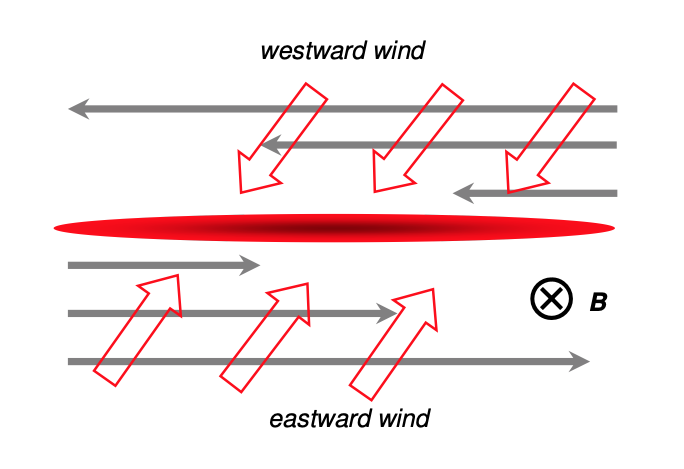
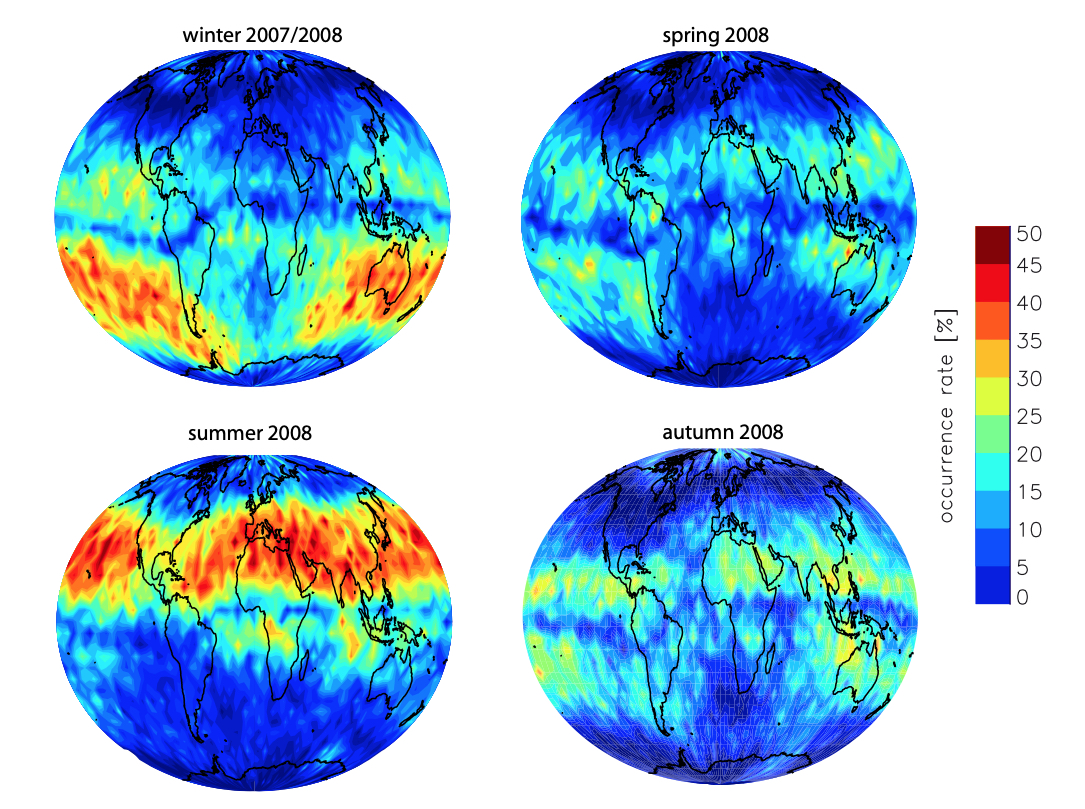
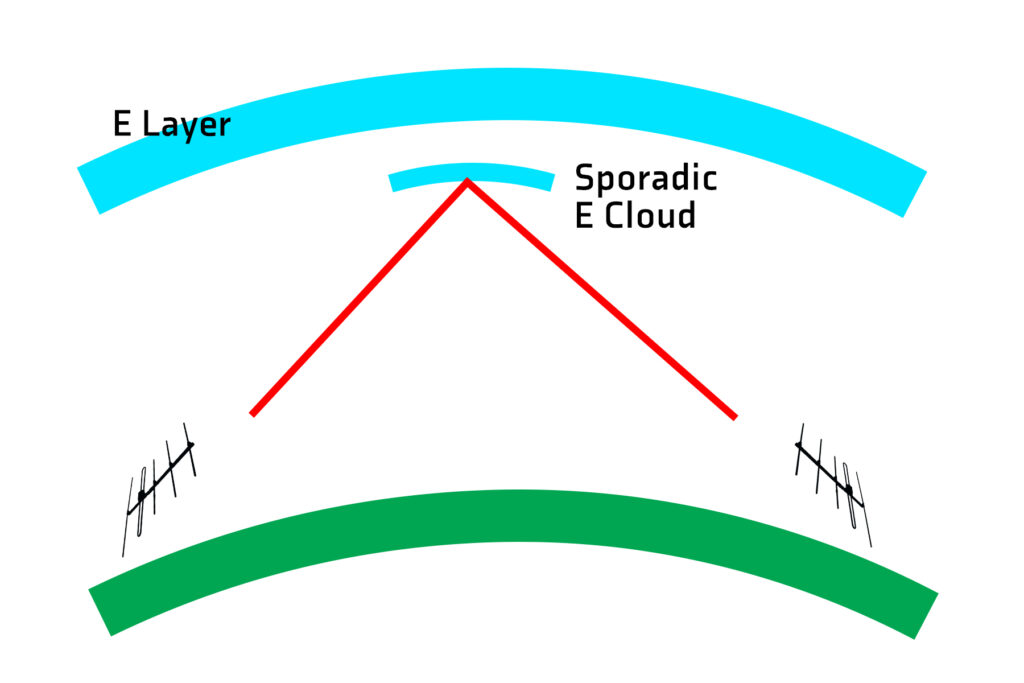
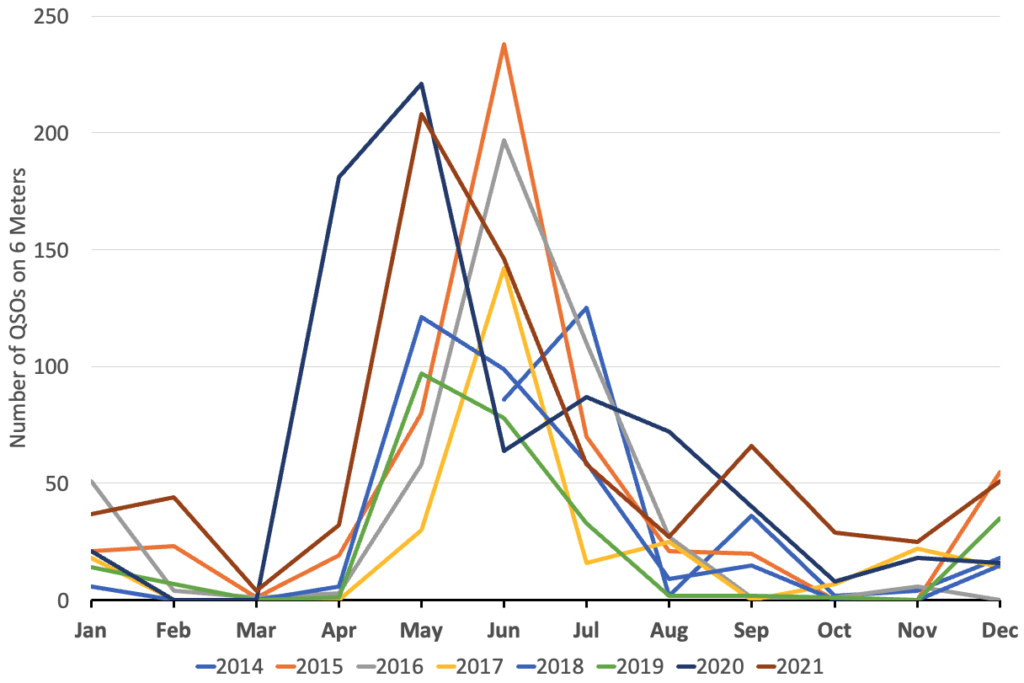
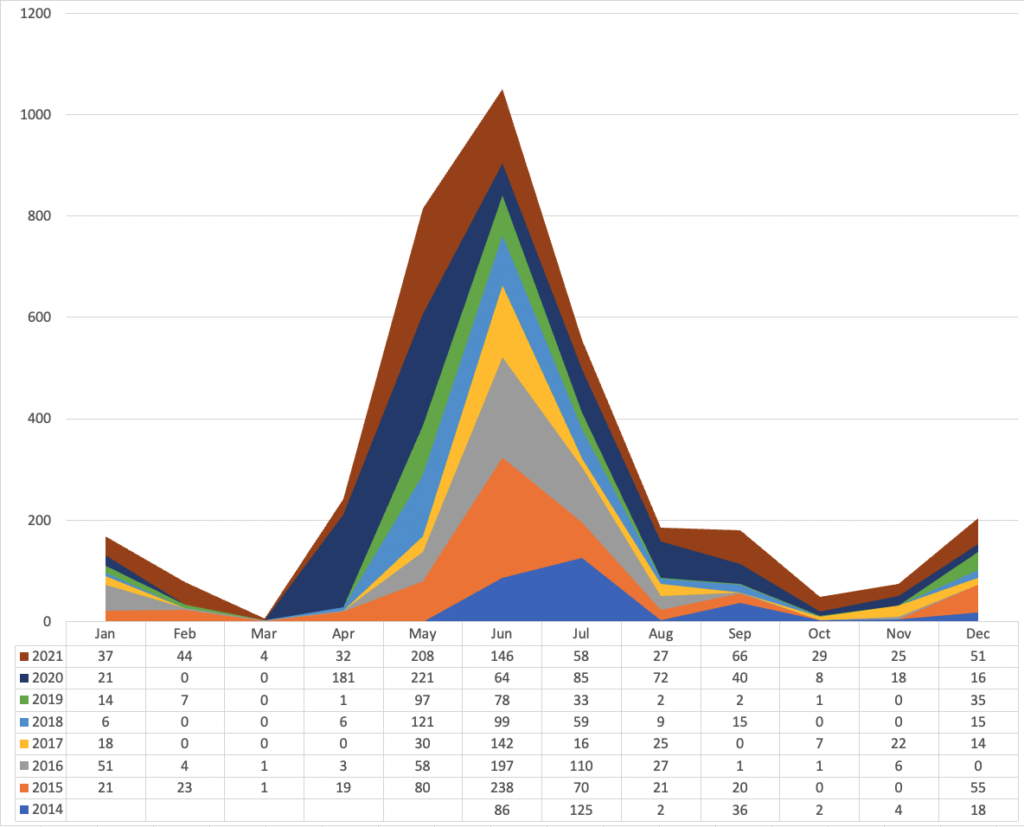
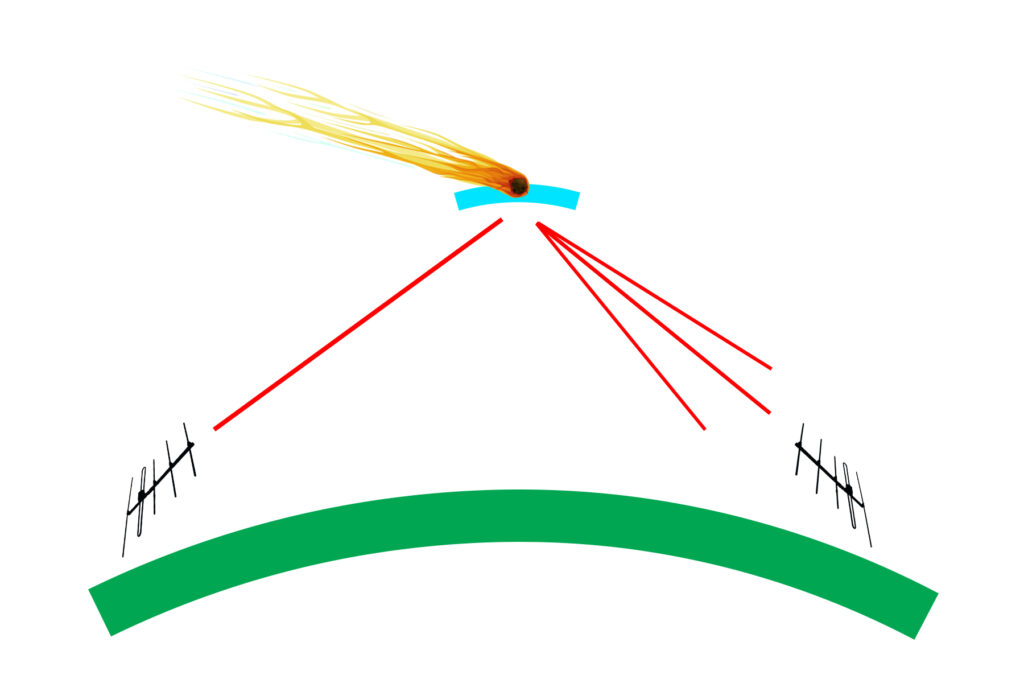

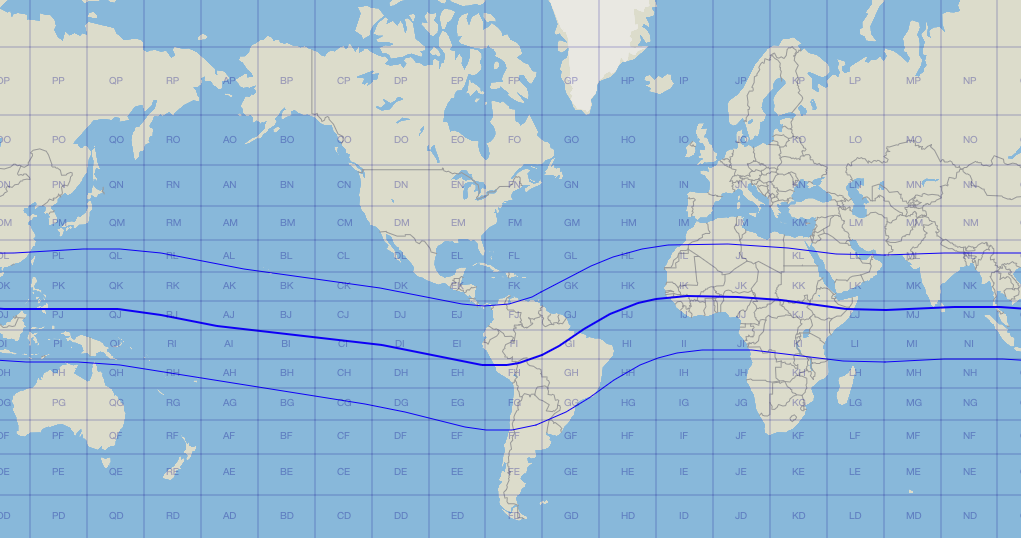



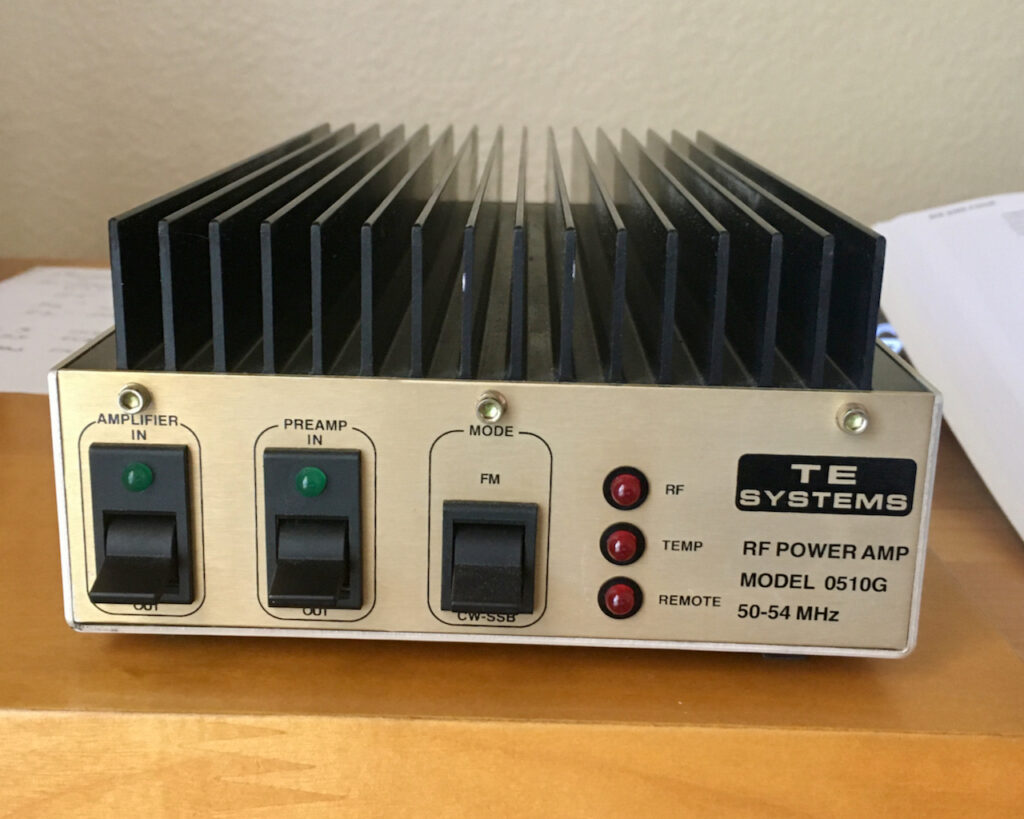
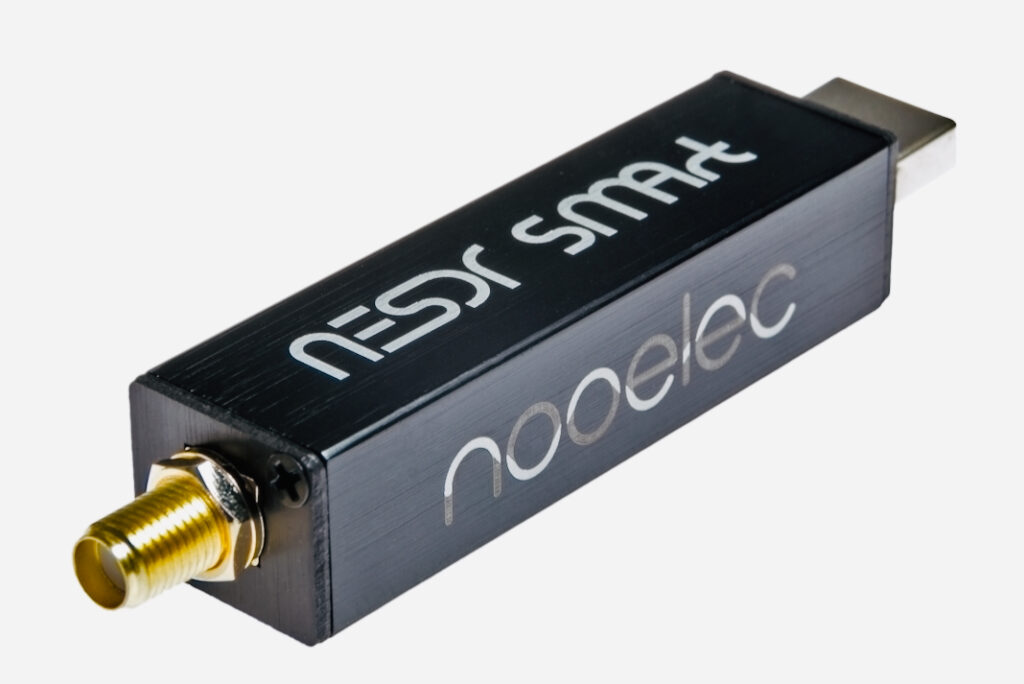
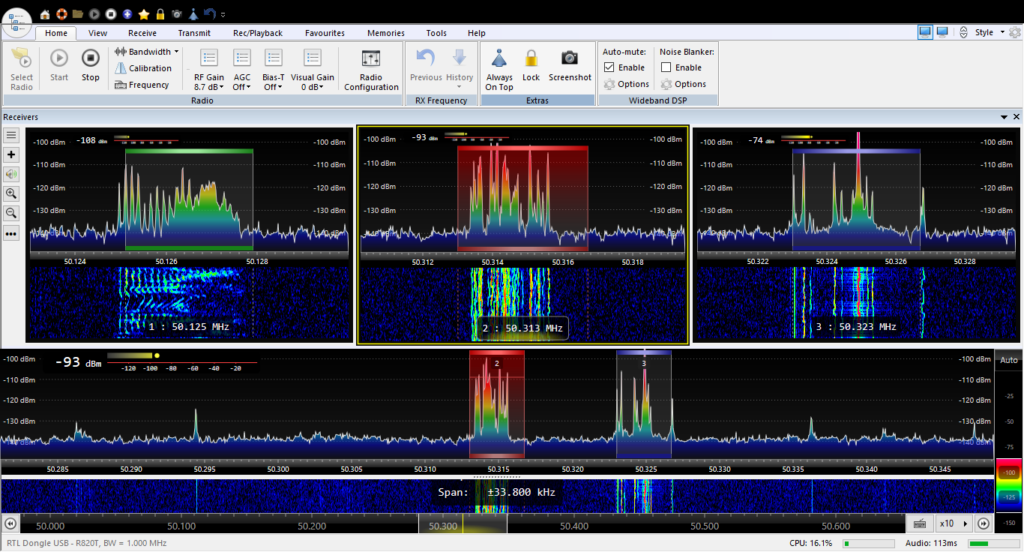
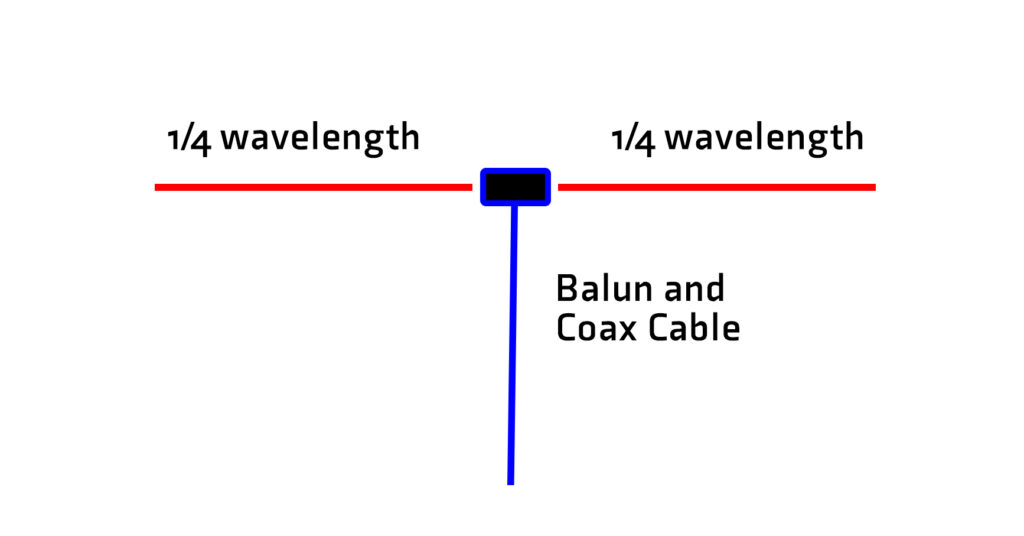

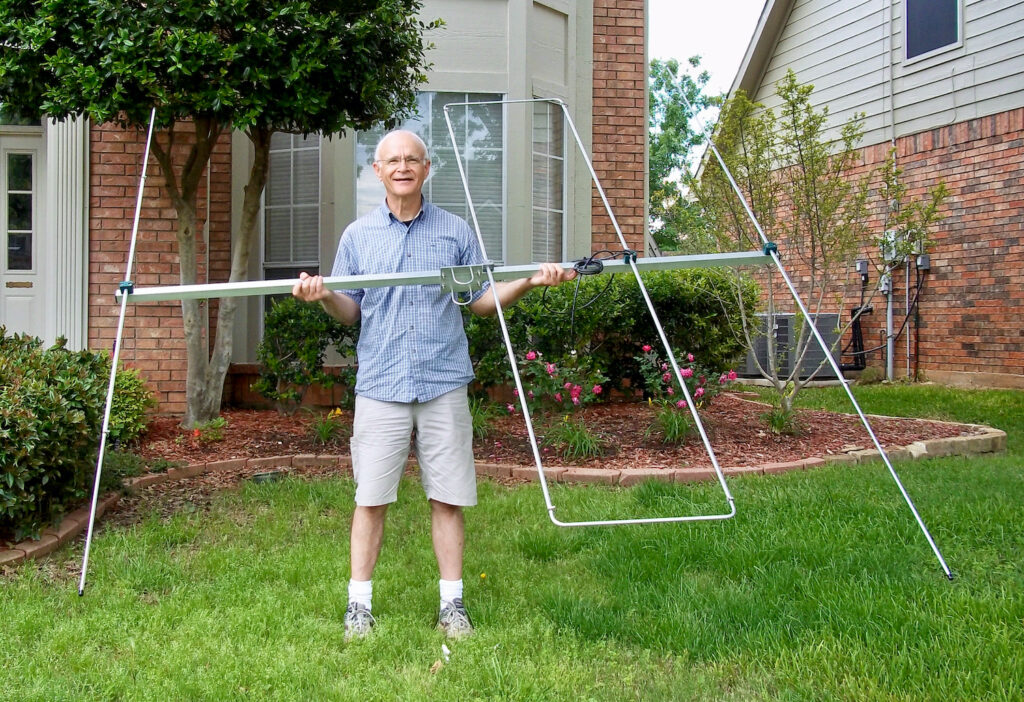
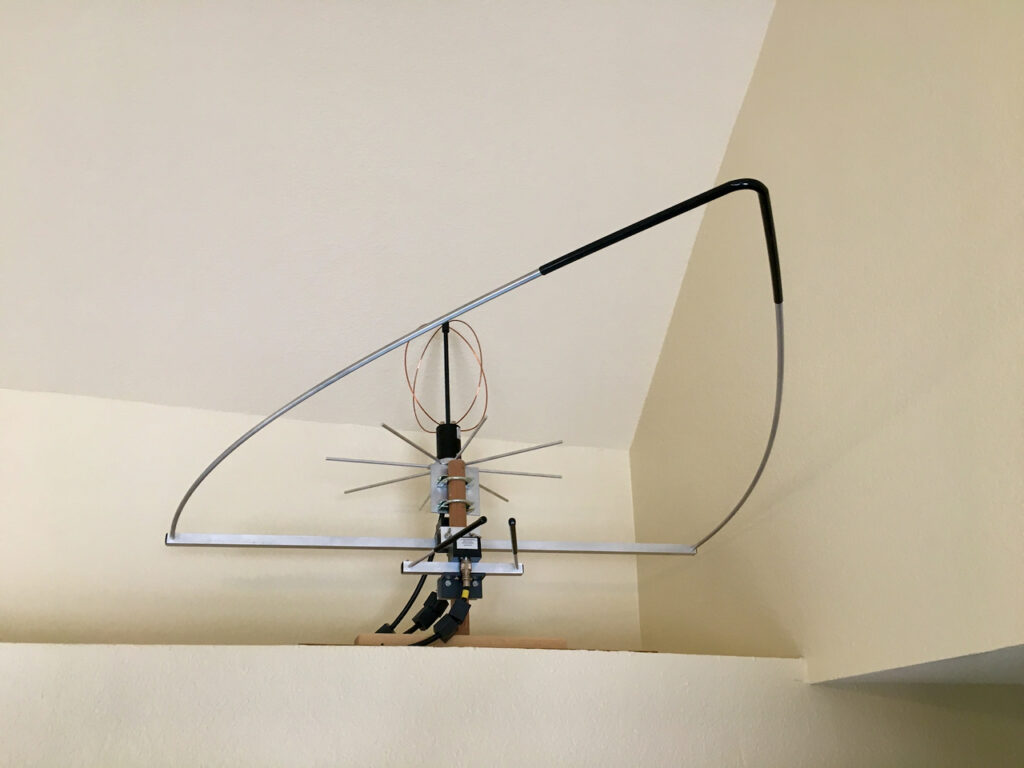
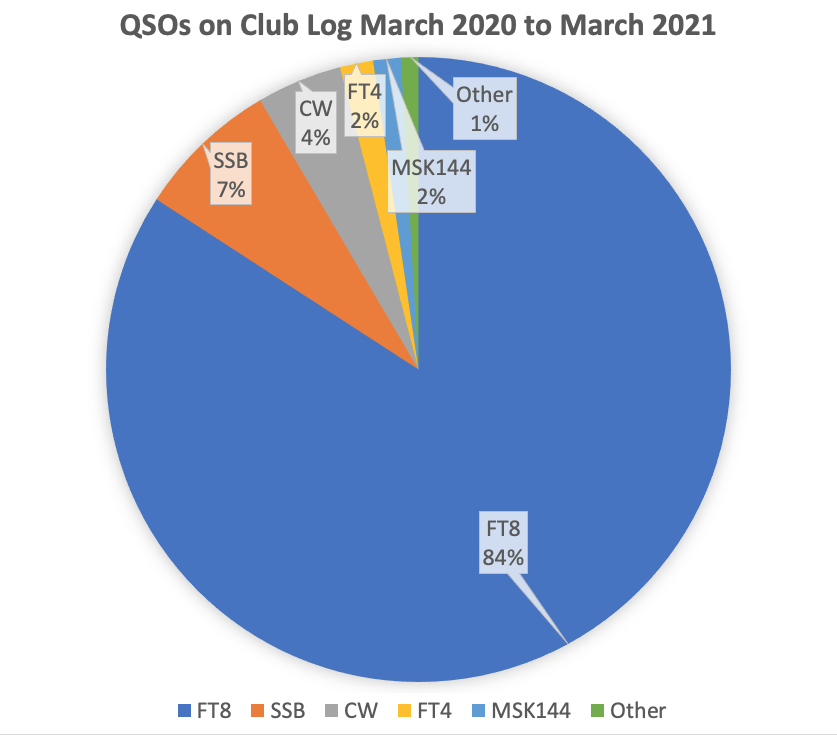
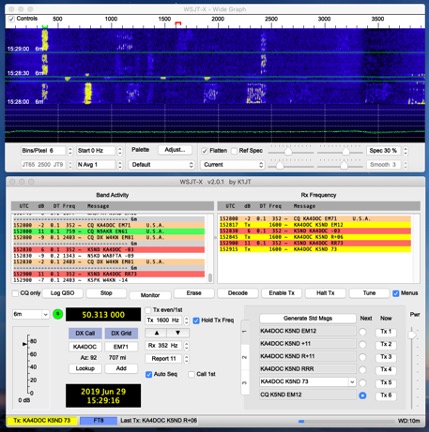
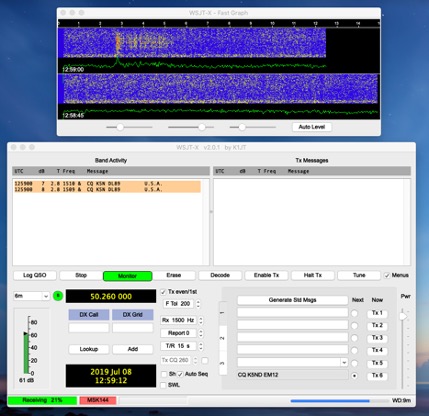
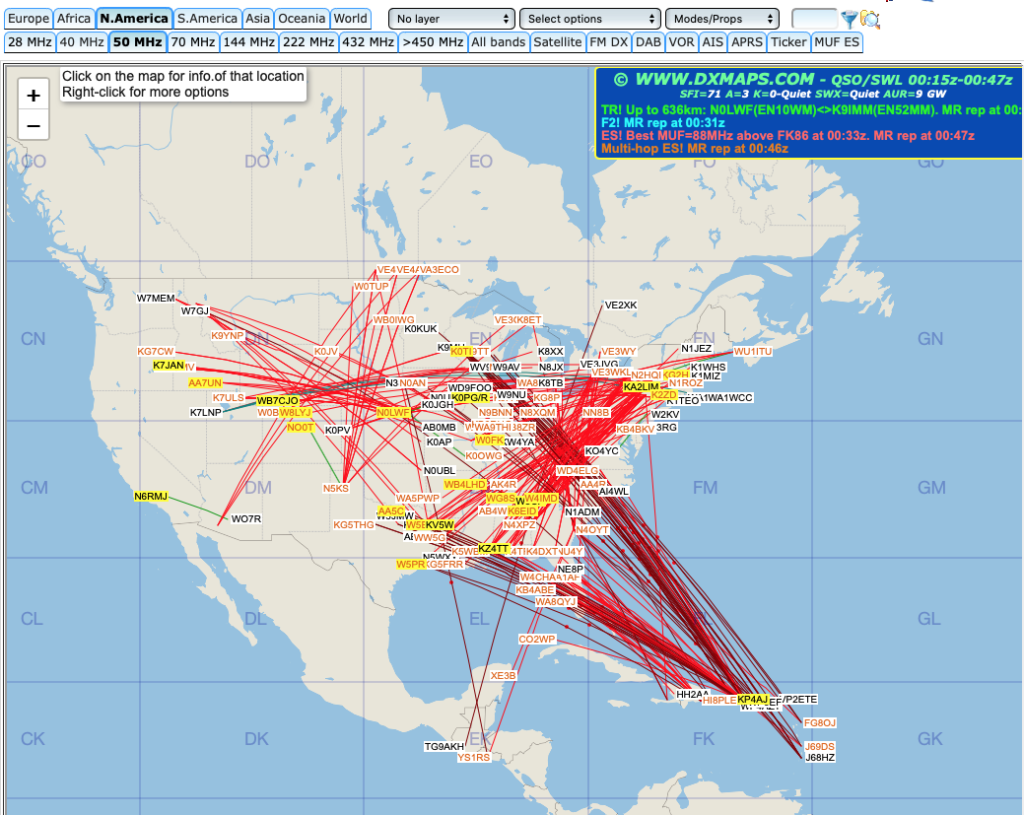
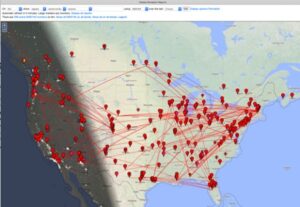
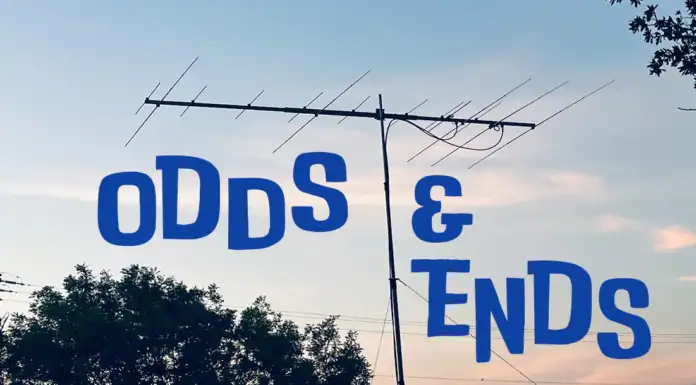





[…] rather read the book online along with lots of links to additional information, you can find it at 6 Meter DXing Guide – Getting Started on the Magic Band. You can also find a presentation at Six Meter Presentation @ ARRL Learning Network. Lots of ways […]
[…] my passion with others via presentations. And, following the popularity of my Six Meter eBook and Guide to 6 Meter DXing, I decided to build a reference for VHF […]
[…] addition, you may find my Guide to 6 Meter DXing including a free download eBook to be helpful as […]
I am newbie Ham and doing SOTA. I am considering to use 6m band on a regular basis without “magic” side of the band. How reliable is 6m as compared to 2m? Also, is horizontal orientation preferred as compared to vertical ? Any additional suggestions would be appreciated.
Hi Gokhan,
Thanks for your note. I’m afraid my knowledge of Summits on the Air is very limited. Not even sure how you would do “without ‘magic’ side of the band” as you state. Perhaps that’s in the SOTA requirements. Reliability is relative depending on the type of communication you are attempting. Not sure there would be much difference on many VHF-UHF bands when communicating line-of-sight from a mountain top. As to horizontal polarization versus vertical, it is best to match polarization on both sides of the QSO. So it would depend on the polarization on the other side of the QSO to minimize cross-polarization losses.
Not sure that is of any help at all. Best to connect with those who have experience with SOTA.
73 and good luck, Jim, K5ND
[…] I’ve done with the Guide to VHF Contesting – References to Further Information and the Guide to 6 Meter DXing – Getting Started on the Magic Band, I felt it might be a good idea to pull together a number of resources for those in pursuit of the […]
[…] a number of blogs on this website, written a short book, and have published the book content on a web page so that it’s more convenient for the online […]
[…] openings this week. I encourage you to get on the air. If you need further insight, check out my Guide to 6 Meter DXing. You can download my eBook on that page as […]
[…] Guide to 6 Meter DXing — 6.51% […]
[…] the MAGIC of Six Meters, or read the same material on a webpage with links to more information at Guide to Six Meter DXing. During the Expo I bring all this to life in a 30-minute presentation and then take questions. […]
[…] Guide to 6 Meter DXing https://kbi.dpx.mybluehost.me/2020/11/guide-to-6-meter-dxing-getting-started-on-the-magic-band/ […]
[…] Guide to 6 Meter DXing — Getting Started on the Magic Band – K5NDNov 18, 2020 … In the early days of ham radio meteor scatter they often used CW and eventually went to very high speed CW with the received signal recorded … […]
Thankyou for this six meter summary.
I have been active on six meter AM since 1958.
Carter Rose, KD6GN
POB 152
Wolf Creek,
Oregon
97497
Thanks, Carter. Hope to work you on 6 meters soon.
73, Jim, K5ND